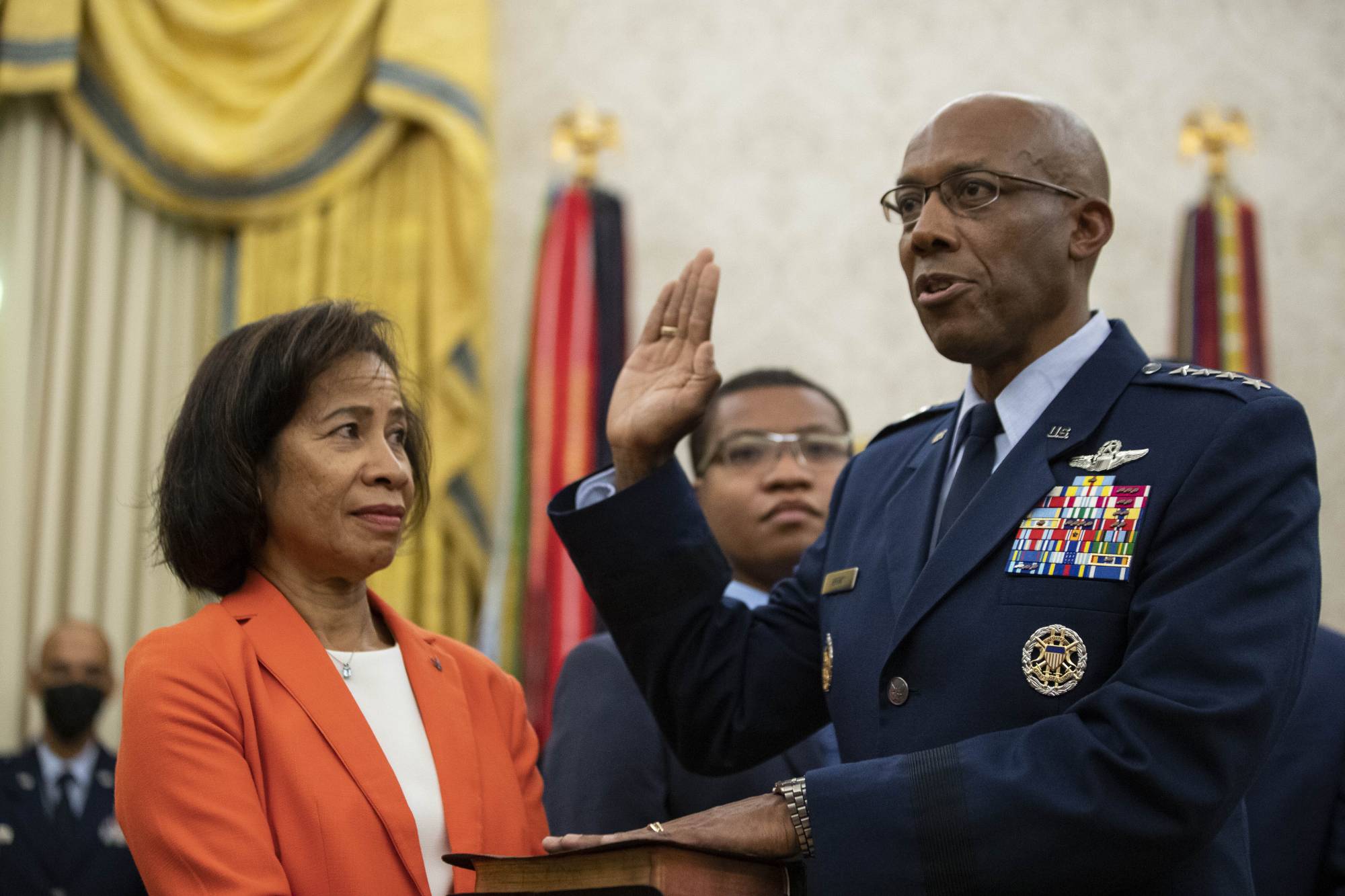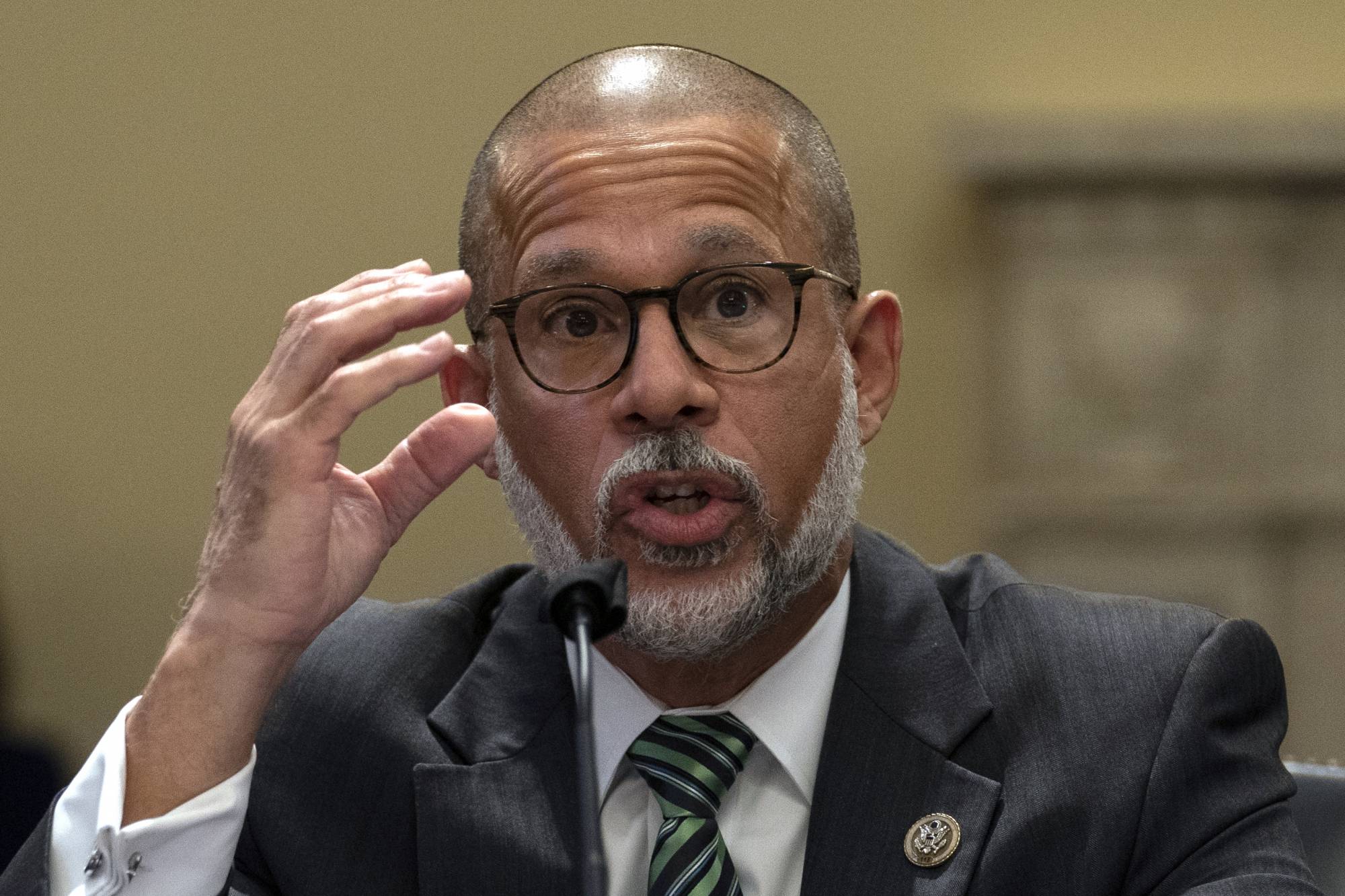Some 500 colleges and universities host Reserve Office Training Corps programs. The Navy Federal Credit Union has expanded its scholarship program to include all of them. For an update, the credit union’s vice president for branch operations, Matt Lawson, joined the Federal Drive with Tom Temin.
Tom Temin: Matt, good to have you on.
Matt Lawson: Thanks for having me
Tom Temin: From your perch of the Navy Federal Credit Union, and looking across the nation at these 500 ROTC programs, what are you seeing in terms of interest and enrollment in ROTC? I’m guessing it’s increasing.
Matt Lawson: I’ve certainly seen the quality of ROTC cadets and midshipmen continues to increase. We’ve had this program since 2018. And I’ve been a judge for the scholarship for each year since its inception, and I’m amazed by the quality of both scholarship for these cadets and midshipmen, their service to their communities and, as important, their military excellence. You’re seeing a lot of interest in STEM fields, which I think is very critical to the future of Department of Defense, and a lot of work in the civilian enterprise with internships and such, which continues to broaden that experience that these future officers are bringing in.
Tom Temin: And we should point out, I guess, that more — well more — than half of the initial officers coming into the military branches come from ROTC, that is to say more than come from the service academies.
Matt Lawson: Oh, certainly ROTC has been that primary source for military for many years. And that doesn’t seem to be changing anytime soon. When we look at this, you know, having a scholarship program specifically for these cadets and midshipmen just makes sense because of the the raw numbers and to make sure they’re taken care of.
Tom Temin: And how does the scholarship program work? Tell us how many scholarships — where who and how.
Matt Lawson: Cadets and midshipmen are nominated by their ROTC detachments and forwarded. We have scholarships for both for Navy Air Force and Army ROTC. There’s a judging panel at Navy Federal Credit Union that looks at these and we ended up awarding scholarships to 12 cadets and midshipmen, evenly distributed between the services, but the top from each service we name as the the ROTC All-American, those are the ones that we honor at the at the Military Bowl that’s upcoming here in end of December.
Tom Temin: All right, and what are the criteria? Are these based on need or based on academic excellence or a combination?
Matt Lawson: So there’s four pillars that we look at — leadership, military excellence, scholarship and service. We look at all four of those equally. Leadership both at their university and in their ROTC detachment. Obviously, military excellence, scholarship, how they’re performing at their university, and then service to their community, service to their ROTC detachment.
Tom Temin: Got it, and just by way of aside, do you find in dealing with the universities that the support is there for ROTC in beyond a grudging kind of way? Or is my perception of universities and ROTC out of date here?
Matt Lawson: I would say, in general, the ROTC cadets are well integrated with the student population, able to be leaders in student government, leaders academically. And so I think there is good support overall for their activities at most universities.
Tom Temin: We’re speaking with Matt Lawson. He’s vice president for branch operations at the Navy Federal Credit Union. And what have you seen in terms of the question of the day, the diversity of the people coming into ROTC? I imagine it’s really grown a lot also in recent years.
Matt Lawson: ROTC in general has been a diverse program for many years, I would say. I’m a proud graduate of an ROTC program. But I would say as we look at the scholarship program, we continue to see a very diverse field of candidates of various backgrounds and from various universities as well, you know, from all universities, including HBCUs, land grant universities and everything in between. We’re seeing nominations from all these schools and glad to be able to recognize the high quality candidates at them.
Tom Temin: And looking at this year’s All-American three, there is definitely an Eastern orientation, but it’s also North-South. You’ve got University of Massachusetts, which is a little bit of a surprise, and then of course, The Citadel and Missouri University of Science and Technology. Tell us about these All-Americans.
Matt Lawson: I will say that the competition is very fierce, and that the judges all have to take a lot of time to review and comparatively rank them. But I’ll say for all three, just outstanding scholarship and outstanding leaders of their ROTC detachments, and in each in their own way making their ROTC detachment better than it was when they arrived on campus. And I think that’s a critical thing that we look at, because we want these to be future leaders who do great things in the military and take care of their soldiers, sailors and airmen and marines. And I think these three candidates are well on their way to doing that.
Tom Temin: And are they seniors? Or what’s their prospect? Where are they in their in their careers?
Matt Lawson: These will all be a commissioning officers here in the next several months. So they will make their way to the force. And this is their sort of, and that’s why I think we see such great candidates that have been honed by the programs for, you know, three, three and a half years.
Tom Temin: And by the way, how do the candidates for scholarships in the first place and the All-Americans get to your attention in the first place?
Matt Lawson: Well, we advertise this program — advertising isn’t the right word — but we certainly publicize this program with all the ROTC detachments, and so a great many of them take us up on it. It’s a fairly simple nomination form. We want to, we know there’s a lot of demands on the ROTC instructor’s time. But we’ve had great response. We started this very small with less than 20 schools and like you said, we’re up to nominating at all ROTC detachments, and we continue to have more nominations each year.
Tom Temin: Yeah, so that puts a lot more pressure on the judging panel, if you’re getting applications from 500 institutions instead of say, 25.
Matt Lawson: Oh, definitely. And it’s certainly a time commitment to read through it. But I’d say it’s a very rewarding time commitment. I think all of our judges have have some sort of veteran status. And I think we always walk away feeling much better about the the future state of the United States military knowing that these are going to be future commissioned officers.
Tom Temin: Matt Lawson is vice president for branch operations at the Navy Federal Credit Union. Thanks so much for joining me.
Matt Lawson: Thanks for having me.






